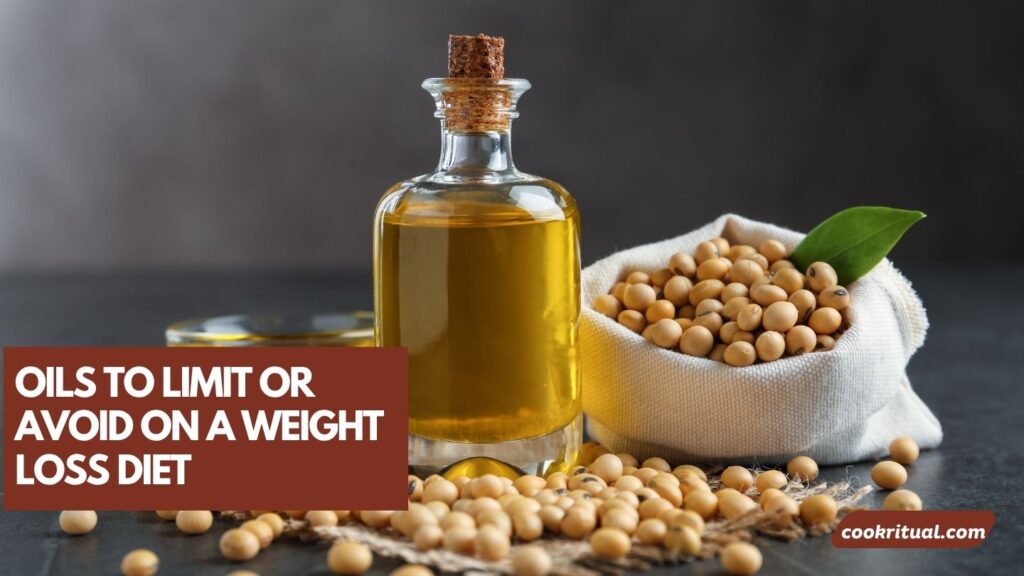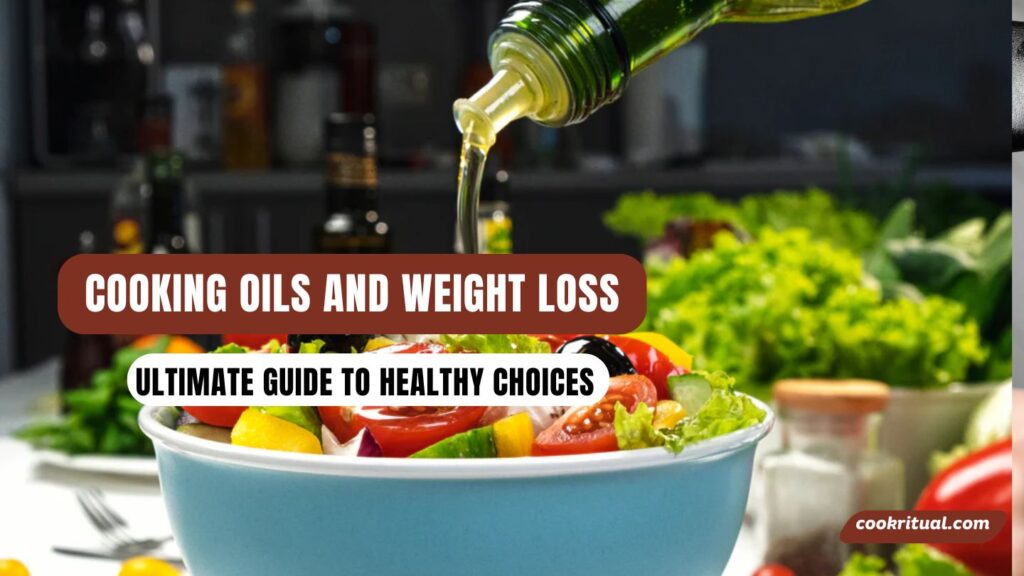Yes, the type of cooking oil we use can directly affect our weight loss goals—some oils support a healthy metabolism, while others quietly add empty calories. With so many options lining grocery store shelves—olive, avocado, coconut, canola, grapeseed—it’s easy to feel overwhelmed about which oils are actually helpful and which might be holding us back.
When we’re trying to eat healthier or shed a few pounds, we often focus on cutting carbs or sugar, but overlook something just as important: the fats we cook with every day. Cooking oils can be both a powerful tool and a hidden hurdle in our kitchen. The key lies in understanding which oils offer heart-healthy fats and nutritional benefits—and which ones should stay on the shelf.
In this ultimate guide, we’ll walk through everything health-conscious home cooks and busy professionals need to know: the science behind fats and oils, the best (and worst) options for weight loss, how to choose the right oil for different cooking styles, and practical ways to use them in everyday meals. Let’s make oil choices simple, strategic, and supportive of our wellness goals.
Contents
- 1 The Science Behind Cooking Oils and Weight Loss
- 2 Best Cooking Oils for Weight Loss
- 3 Oils to Limit or Avoid on a Weight Loss Diet
- 4 How to Choose the Right Oil for Your Cooking Style and Goals
- 5 Practical Tips for Cooking with Healthy Oils
- 6 Buying Guide: What to Look for When Shopping for Cooking Oils
- 7 Common Myths About Cooking Oils and Weight Loss
- 8 Frequently Asked Questions (FAQs)
- 9 Actionable Recommendations & Final Thoughts
The Science Behind Cooking Oils and Weight Loss
Understanding Fats: Saturated vs Unsaturated Fats
Not all fats are created equal. Saturated fats, often found in butter, lard, and some tropical oils, can raise LDL (bad) cholesterol when eaten in large amounts. On the other hand, unsaturated fats—especially monounsaturated and polyunsaturated fats—are known to help lower cholesterol and support heart health.
Healthy fats from oils like olive, avocado, and canola can also help the body absorb fat-soluble vitamins like A, D, E, and K. These fats are essential, not optional.
According to Harvard Health, replacing saturated fats with healthier fats may reduce the risk of heart disease and help manage weight.
Caloric Density of Oils: Why Even Healthy Oils Can Add Up
Every cooking oil—no matter how healthy—contains around 120 calories per tablespoon. That’s because all oils are pure fat. Even if we’re using olive oil, adding a few “extra glugs” while cooking can quickly push us past our daily calorie needs.
That’s why it’s helpful to measure oil rather than eyeballing it. A little goes a long way, especially when we’re watching our calorie intake.
Role of Healthy Fats in Weight Management
Healthy fats do more than just add flavor. They can help us:
- Stay full longer, reducing the urge to snack
- Stabilize blood sugar, especially when eaten with carbs
- Support hormone function, which plays a key role in metabolism
In fact, studies have shown that diets higher in unsaturated fats may help people lose more body fat compared to low-fat diets. The Mayo Clinic recommends choosing oils rich in unsaturated fats for long-term health benefits.
Best Cooking Oils for Weight Loss

1. Olive Oil: Heart-Healthy and Full of Antioxidants
Extra virgin olive oil is a go-to choice for healthy eating. It’s packed with antioxidants called polyphenols, and it’s rich in monounsaturated fats, which support heart and brain health.
- Best for: Salad dressings, light sautéing, drizzling on vegetables
- Flavor: Fruity, rich, slightly peppery
- Bonus: Helps reduce inflammation
Learn more from the American Heart Association
2. Avocado Oil: Rich in Monounsaturated Fats
Avocado oil has a high smoke point and a mild taste. It’s full of vitamin E and helps the body absorb nutrients from vegetables.
- Best for: Grilling, roasting, baking
- Flavor: Buttery and mild
- Bonus: Great for high-heat cooking
3. Coconut Oil: MCTs and Fat-Burning Potential
Coconut oil contains medium-chain triglycerides (MCTs), which the body can use for quick energy. Some studies suggest MCTs may support fat-burning and reduce appetite.
- Best for: Baking, stir-fries, and curries
- Flavor: Sweet and coconutty
- Bonus: Naturally antimicrobial
Note: Coconut oil is high in saturated fat, so it’s best used in moderation. Cleveland Clinic explains the balance here.
4. Canola Oil: Balanced Omega Profile
Canola oil is low in saturated fat and has a good balance of omega-3 and omega-6 fatty acids. It’s versatile, affordable, and light-tasting.
- Best for: Frying, baking, grilling
- Flavor: Very mild
- Bonus: Budget-friendly and widely available
5. Grapeseed Oil: Light Flavor, Good for Medium-Heat Cooking
Grapeseed oil is rich in vitamin E and polyunsaturated fats. It’s a great neutral oil for cooking and dressings.
- Best for: Sautéing, salad dressings, marinades
- Flavor: Clean and light
- Bonus: Naturally high in antioxidants
Comparison Table of Popular Cooking Oils
| Oil | Smoke Point (°F) | Fat Type | Calories (per tbsp) | Best Uses |
| Olive Oil | ~375 | Monounsaturated | 119 | Sautéing, dressing |
| Avocado Oil | ~520 | Monounsaturated | 124 | Roasting, grilling |
| Coconut Oil | ~350 | Saturated + MCTs | 117 | Baking, stir-fry |
| Canola Oil | ~400 | Monounsaturated | 120 | Frying, baking |
| Grapeseed Oil | ~420 | Polyunsaturated | 120 | Sautéing, salad |
Oils to Limit or Avoid on a Weight Loss Diet

Refined Vegetable Oils: Soybean, Corn, Sunflower
These oils are common in packaged foods and restaurants. They’re heavily processed, often high in omega-6 fatty acids, which can cause inflammation when consumed in excess.
- Found in: Chips, fried foods, baked goods
- Concern: May contribute to weight gain and metabolic issues
Harvard T.H. Chan School of Public Health advises limiting highly refined oils to reduce inflammation.
Trans Fats and Hydrogenated Oils
These are the worst offenders. Found in some margarines and processed snacks, trans fats raise bad cholesterol and lower good cholesterol.
- Found in: Packaged baked goods, shortening, some frozen meals
- Status: Banned in the U.S., but may still appear in imported or outdated products
High-Calorie, Low-Nutrient Oils
Even “natural” oils can be unhealthy if they’re stripped of nutrients. Oils with low levels of antioxidants or those used past their smoke point can form harmful compounds.
- Tip: Always check labels and opt for cold-pressed or extra virgin varieties when possible.
How to Choose the Right Oil for Your Cooking Style and Goals
Consider Smoke Point and Cooking Method
The smoke point is the temperature where oil starts to burn and break down. When oil burns, it can lose nutrients and create harmful compounds. That’s why it’s important to match the oil with the way we cook.
Here’s a quick guide:
| Cooking Method | Best Oil Options | Smoke Point Range (°F) |
| Salad dressings | Extra virgin olive oil, flaxseed | 320–375 |
| Light sautéing | Olive oil, grapeseed oil | 350–420 |
| High-heat cooking | Avocado oil, refined coconut oil | 450–520 |
| Deep frying | Canola oil, peanut oil | 400–450 |
Culinary Institute of America notes that using oils above their smoke point can lead to bitter flavors and loss of nutritional value.
Look at the Oil’s Fat Composition
Choose oils high in monounsaturated and polyunsaturated fats, and lower in saturated fats. These fats help with heart health and may improve weight management.
For more on the types of fats in cooking oils, see the USDA FoodData Central for full nutrition details.
Unrefined vs Refined Oils
- Unrefined (cold-pressed or virgin) oils are less processed and retain more flavor and nutrients.
- Refined oils are filtered to remove impurities, which gives them a higher smoke point but fewer antioxidants.
For salads or drizzling, go with unrefined oils. For high-heat cooking, refined oils are often safer and more stable.
Best Oils for Different Diets
Each eating style has oils that work best:
- Keto or low-carb: Coconut oil, avocado oil
- Mediterranean: Olive oil, grapeseed oil
- Vegan: Flaxseed oil, walnut oil (for cold use)
- Paleo: Extra virgin olive oil, coconut oil
Practical Tips for Cooking with Healthy Oils
Proper Portion Sizes: Measuring Oil Without Overdoing It
One tablespoon of oil has around 120 calories. That adds up fast when we don’t measure. Use measuring spoons when cooking, or try a spray bottle for light coating.
- Use a teaspoon to drizzle oil over veggies
- Use a silicone brush to spread oil on a pan
- Avoid pouring straight from the bottle
The CDC recommends using small amounts of healthy oils to keep calories in check.
Storing Oils for Freshness and Flavor
Light, heat, and air can damage oils. Store oils in a cool, dark cabinet, away from the stove.
- Use dark glass bottles or airtight containers
- Keep oils like flaxseed or walnut oil in the fridge
- Use oils within 3–6 months of opening for best quality
Smart Substitutions: Oil Alternatives in Baking and Roasting
If we want to cut calories, we can swap out oil in recipes with lower-fat options:
- Unsweetened applesauce in baking
- Mashed avocado for creamy dressings
- Greek yogurt for dips or marinades
- Vegetable broth instead of oil for sautéing
These swaps work well in many dishes and add fiber or protein too!
Using Oils in Meal Prep and Salad Dressings
Instead of heavy sauces, use oil-based dressings made at home. Try:
- 2 tbsp olive oil + 1 tbsp lemon juice + herbs
- 1 tbsp avocado oil + balsamic vinegar + mustard
Homemade dressings keep flavors fresh and let us control the ingredients.
Buying Guide: What to Look for When Shopping for Cooking Oils
Label Reading Tips: Organic, Cold-Pressed, Virgin, Extra Virgin
Labels can be tricky. Here’s what to know:
- Cold-pressed means oil was made without heat
- Virgin oils are less processed and keep more nutrients
- Extra virgin is the highest grade of unrefined oil (especially for olive oil)
- Organic means no synthetic pesticides were used
Look for “non-GMO” if that matters to you. Check the bottle date and buy in small amounts to keep it fresh.
Avoiding Misleading Marketing
Some oils say “light” or “cholesterol-free,” but that doesn’t always mean healthier. All plant-based oils are naturally cholesterol-free.
The FDA warns that marketing terms like “light” can refer to color or taste—not calories.
Best Brands for Healthy Cooking Oils
Trusted brands are worth the few extra dollars, especially when oils are part of our daily meals. Look for:
- California Olive Ranch (olive oil)
- Chosen Foods (avocado oil)
- Nutiva (coconut oil)
- La Tourangelle (walnut, grapeseed, specialty oils)
Choose brands that test for purity and come in dark bottles.
Cost vs Quality Considerations
Healthier oils can cost more, but they’re often worth it. A high-quality oil lasts longer and adds more flavor, so we can use less. When on a budget:
- Buy on sale and store properly
- Use different oils for different uses (save EVOO for dressings, use canola for roasting)
- Look for store-brand versions of cold-pressed oils
Common Myths About Cooking Oils and Weight Loss
Myth 1: All Fats Are Bad for Weight Loss
Many people think eating fat leads to body fat. But that’s not the whole story. Our bodies need healthy fats to work well. They help us absorb vitamins, protect our organs, and feel full longer.
According to Harvard T.H. Chan School of Public Health, good fats from oils like olive and avocado can support heart health and may help with weight control.
Myth 2: Coconut Oil Is the Healthiest Option
Coconut oil has gained popularity, but it’s high in saturated fat. While some studies show it may help raise good cholesterol, it’s still wise to use it in small amounts and mix in other oils.
The American Heart Association recommends limiting saturated fats, including coconut oil, due to potential heart risks.
Myth 3: Cooking Sprays Are Always Better
Sprays can help cut calories, but they often include propellants or additives. Some also coat pans unevenly. If we want a natural option, we can use a refillable oil spray bottle with our oil of choice.
Frequently Asked Questions (FAQs)
Can I lose weight if I use oil in cooking?
Yes! When used in the right amount, healthy oils can help us feel full and avoid overeating. Just keep portions small—usually 1 to 2 tablespoons a day.
Which oil is best for weight loss?
Avocado oil, extra virgin olive oil, and canola oil are good picks. They are high in healthy fats and work well for many cooking styles.
Should I avoid all oil if I’m on a low-fat diet?
Not necessarily. Our bodies need some fat to absorb nutrients and stay healthy. Choose oils with more unsaturated fats and use them in moderation.
How do I store oils the right way?
Keep oils in a cool, dark place. Some oils like flaxseed and walnut should be kept in the fridge. Always close the cap tightly to keep air out.
Are flavored oils okay to use?
Yes, but check the label for added sugars or artificial ingredients. Flavored oils are great for drizzling or salad dressings.
Actionable Recommendations & Final Thoughts
Key Takeaways
- Healthy oils like olive, avocado, and grapeseed can support weight goals
- Match the oil’s smoke point to your cooking method
- Measure oil carefully—1 tablespoon = ~120 calories
- Store oils right to keep them fresh
- Avoid myths—not all fats are bad, and not all oils are created equal
Your Next Steps
- Swap out heavy oils or butter for heart-healthy ones in your favorite meals
- Use a spray bottle or measuring spoon to control how much oil you use
- Try one new healthy oil each week and explore how it works in your recipes
- Look for cold-pressed, dark-bottled oils next time you shop


